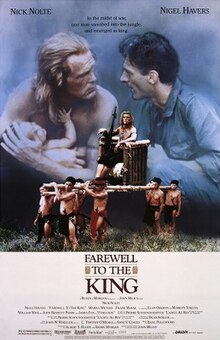Poltergeist is an American horror film franchise distributed by Metro-Goldwyn-Mayer during the 1980s. The original trilogy revolves around the members of the Freeling family, who are stalked and terrorized by a group of ghosts, led by a demon known as the Beast, that are attracted to the youngest daughter, Carol Anne. The original film was co-written and produced by Steven Spielberg. The Poltergeist films collected a total of approximately $132 million at the United States box office.

The Dayak or Dyak or Dayuh are one of the native groups of Borneo. It is a loose term for over 200 riverine and hill-dwelling ethnic groups, located principally in the central and southern interior of Borneo, each with its own dialect, customs, laws, territory, and culture, although common distinguishing traits are readily identifiable. Dayak languages are categorised as part of the Austronesian languages. The Dayak were animist in belief; however, since the 19th century there has been mass conversion to Christianity as well as Islam due to the spreading of Abrahamic religions.
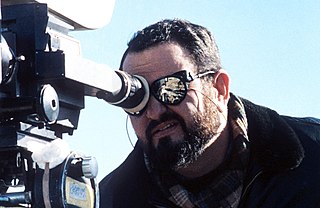
John Frederick Milius is an American screenwriter, film director, and producer. He was a writer for the first two Dirty Harry films, received an Academy Award nomination as screenwriter of Apocalypse Now (1979), and wrote and directed The Wind and the Lion (1975), Conan the Barbarian (1982), and Red Dawn (1984). He later served as the co-creator of the Primetime Emmy Award-winning television series Rome (2005–2007).
The Odd Couple is a play by Neil Simon. Following its premiere on Broadway in 1965, the characters were revived in a successful 1968 film and 1970s television series, as well as several other derivative works and spin-offs. The plot concerns two mismatched roommates: the neat, uptight Felix Ungar and the slovenly, easygoing Oscar Madison. Simon adapted the play in 1985 to feature a pair of female roommates in The Female Odd Couple. An updated version of the 1965 show appeared in 2002 with the title Oscar and Felix: A New Look at the Odd Couple.

Basil Konstantine Poledouris was an American composer, conductor, and orchestrator of film and television scores, best known for his long-running collaborations with directors John Milius and Paul Verhoeven. Among his works are scores for the films Conan the Barbarian (1982), Red Dawn (1984), Iron Eagle (1986), RoboCop (1987), The Hunt for Red October (1990), Free Willy (1993), Starship Troopers (1997) and Les Misérables (1998). Poledouris won the Primetime Emmy Award for Outstanding Music Composition for a Limited Series, Movie, or Special for his work on the four-part miniseries Lonesome Dove in 1989, and was a four-time recipient of the BMI Film Music Award.
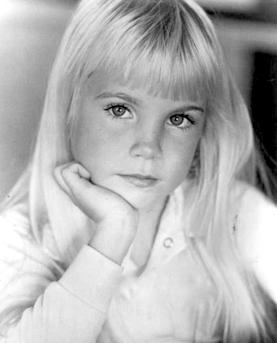
Heather Michele O'Rourke was an American child actress. She had her breakthrough starring as Carol Anne Freeling in the supernatural horror film Poltergeist (1982), which received critical acclaim and established her as an influential figure in the genre. She went on to reprise the role in Poltergeist II: The Other Side (1986) and Poltergeist III (1988), the last of which was released posthumously.

The Ibans or Sea Dayaks are an Austronesian ethnic group indigenous to the state of Sarawak and some parts of Brunei and West Kalimantan, Indonesia. The Ibans are also known as Sea Dayaks and the title Dayak was given by the British and the Dutch to various ethnic groups in Borneo island. It is believed that the term "Iban" was originally an exonym used by the Kayans, who – when they initially came into contact with them – referred to the Sea Dayaks in the upper Rajang river region as the "Hivan".
Major Tom Harnett Harrisson, DSO OBE was a British polymath. In the course of his life he was an ornithologist, explorer, journalist, broadcaster, soldier, guerrilla, ethnologist, museum curator, archaeologist, documentarian, film-maker, conservationist and writer. Although often described as an anthropologist, and sometimes referred to as the "Barefoot Anthropologist", his degree studies at University of Cambridge, before he left to live in Oxford, were in natural sciences. He was a founder of the social observation organisation Mass-Observation. He conducted ornithological and anthropological research in Sarawak (1932) and the New Hebrides (1933–35), spent much of his life in Borneo and finished up in the US, the UK and France, before dying in a road accident in Thailand.
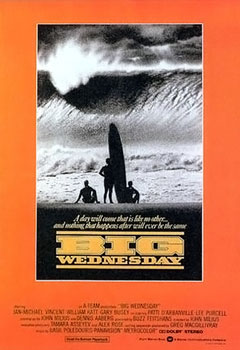
Big Wednesday is a 1978 American coming of age buddy sports comedy-drama film directed by John Milius. Written by Milius and Dennis Aaberg, it is loosely based on their own experiences at Malibu, California. The picture stars Jan-Michael Vincent, William Katt, and Gary Busey as California surfers facing life and the Vietnam War against the backdrop of their love of surfing.
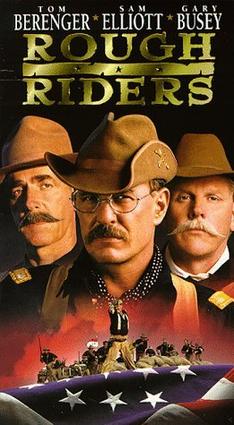
Rough Riders is a 1997 American television miniseries directed and co-written by John Milius about future President Theodore Roosevelt and the regiment known as the 1st US Volunteer Cavalry; a.k.a. the Rough Riders. The series prominently shows the bravery of the volunteers at the Battle of San Juan Hill, part of the Spanish–American War of 1898. It was released on DVD in 2006. The series originally aired on TNT with a four-hour running time, including commercials, over two consecutive nights during July 1997. It is, as of 2022, John Milius' last directorial credit for a film.

Dillinger is a 1973 American gangster film about the life and criminal exploits of notorious bank robber John Dillinger. It stars Warren Oates as Dillinger, Ben Johnson as his pursuer, FBI Agent Melvin Purvis, and Cloris Leachman as the "Lady in Red" who made it possible for Purvis to kill Dillinger. It also features the first film performance by the singer Michelle Phillips as Dillinger's moll Billie Frechette. The film, narrated by Purvis, chronicles the last few years of Dillinger's life as the FBI and law enforcement closed in. The setting is Depression era America, from 1933 to 1934, with largely unromanticized depictions of the principal characters. It was written and directed by John Milius for Samuel Z. Arkoff's American International Pictures.

Conan the Barbarian is a 1982 American epic sword and sorcery film directed by John Milius and written by Milius and Oliver Stone. Based on Robert E. Howard's Conan, the film stars Arnold Schwarzenegger and James Earl Jones and tells the story of a barbarian warrior named Conan (Schwarzenegger) who seeks vengeance for the death of his parents at the hands of Thulsa Doom (Jones), the leader of a snake cult.

Extreme Prejudice is a 1987 American neo-Western action thriller film starring Nick Nolte and Powers Boothe, with a supporting cast including Michael Ironside, María Conchita Alonso, Rip Torn, William Forsythe, and Clancy Brown. The film was directed by Walter Hill, with a screenplay by Harry Kleiner and Deric Washburn from a story by John Milius and Fred Rexer.

Geronimo: An American Legend is a 1993 historical Western film starring Wes Studi, Jason Patric, Gene Hackman, Robert Duvall, and Matt Damon in an early role. The film, which was directed by Walter Hill, is based on a screenplay by John Milius. It is a fictionalized account of the Apache Wars and how First Lieutenant Charles B. Gatewood convinced Apache leader Geronimo to surrender in 1886.

Pierre Schoendoerffer was a French film director, a screenwriter, a writer, a war reporter, a war cameraman, a renowned First Indochina War veteran, a cinema academician. He was president of the Académie des Beaux-Arts for 2001 and for 2007.

The Life and Times of Judge Roy Bean is a 1972 American Western comedy film written by John Milius, directed by John Huston, and starring Paul Newman. It was loosely based on the life and times of Judge Roy Bean.
Richard Howard Morgan was an Australian actor. He was most famous for playing the long-running role of Terry Sullivan in the Australian television series The Sullivans.
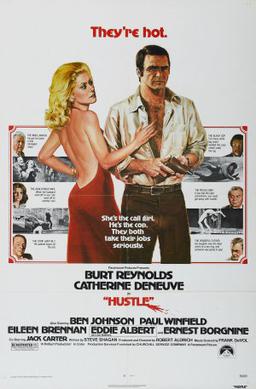
Hustle is a 1975 American neo-noir crime thriller film directed by Robert Aldrich and starring Burt Reynolds and Catherine Deneuve.
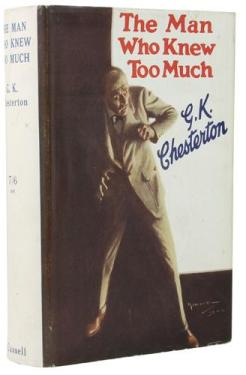
The Man Who Knew Too Much: And Other Stories (1922) is a book of detective stories by English writer G. K. Chesterton, published in 1922 by Cassell and Company in the United Kingdom, and Harper Brothers in the United States. It contains eight connected short stories about "The Man Who Knew Too Much", and unconnected stories featuring other heroes/detectives. The United States edition contains one of these additional stories: "The Trees of Pride", while the United Kingdom edition contains "Trees of Pride" and three shorter stories: "The Garden of Smoke", "The Five of Swords" and "The Tower of Treason".

Atlas Shrugged: Part II is a 2012 American drama film based on the 1957 novel Atlas Shrugged by the philosopher Ayn Rand. It is the second installment in the Atlas Shrugged film series and the first sequel to the 2011 film Atlas Shrugged: Part I, continuing the story where its predecessor left off. Directed by John Putch, the film stars Samantha Mathis, Jason Beghe, Esai Morales, Patrick Fabian, Kim Rhodes, Richard T. Jones, and D. B. Sweeney. The film was released on October 12, 2012.
